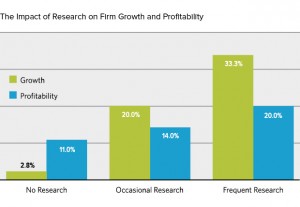— March 9, 2018

rawpixel / Pixabay
Employee retention is a major concern for businesses of all sizes. Even in organizations that aren’t facing a talent crisis, the ability to attract and retain highly skilled and motivated employees may prove invaluable for long-term business success. Simply being able to keep employee turnover low can help reduce the need to spend time, money, and resources on attracting and training new employees. Further, retaining key employees with the company can minimize disruptions caused by sudden absences, which can also impact morale.
Here are a few of the most effective employee retention strategies that your business can use in 2018:
1: Focusing on Improving Leadership
There’s a saying to explain one of the top causes of employee turnover: “people don’t quit their jobs—they quit their bosses.” As noted in data cited by Inc.com:
“While there are various reasons for people quitting their jobs, truth is, when you pinpoint the causes, a large percentage point back to the manager (some estimate managers are responsible for up to 60 percent of all the reasons people quit). Gallup research has already proved that the immediate manager is your likely culprit.”
While things such as pay and benefits may be a factor, it is more common to see employees leave because of frustrations with their immediate manager. Developing managers to improve their leadership skills can help prevent excessive turnover from dissatisfied employees.
Some skills to focus on when developing leaders include:
- Soft Skills. So-called “soft skills” such as emotional intelligence, active listening, and building trust are critical for leaders to successfully interact with and motivate employees. Using these skills, leaders can earn commitment from employees to improve productivity and engagement.
- Giving Feedback. Employees need to know where they stand in regards to their performance and career path. Providing feedback is a crucial task for leaders to guide the development of their direct reports’ careers.
- Flexibility. Today’s leaders need to be able to maintain efficiency while adapting to changing circumstances without adversely impacting employee morale and motivation. Having flexible leadership skills helps managers/leaders at all levels better respond to the needs of both their direct reports and the organization as a whole.
- Leading by Example. Leaders need to model the behaviors that are consistent with the organization’s values and that employees are expected to follow. This helps to avoid the perception of a “double standard” that creates disengagement or enmity in employees.
2: Empowering Employees
Another common complaint for leaving an employer is the employee’s lack of empowerment or sense of control over their career path. When an employee believes that there’s no room for advancement in their career, or that they have no control over their own success or failure in their work, they can quickly become disengaged—and thus more likely to look for other opportunities where they have a chance for advancement or control over their work.
To empower employees and give them a sense of control over, it is important to:
- Clearly Communicate Expectations. One of the reasons why many employees feel that they don’t have any control over their careers is that they don’t know what’s expected of them. When this is the case, systems of reward and punishment can feel arbitrary. By clearly communicating expectations, it is possible to ensure that employees know how they can exert some control over their careers.
- Discuss Future Plans with Employees. Having discussions with employees about where they want to be in the next few years can have a significant influence on whether or not they stay with the organization. By discussing potential career paths, employees can be shown how they may advance within the company—providing an incentive to stay as well as creating a sense of investment.
- Provide Regular Feedback. Employees need regular feedback as to how they’re performing against the company’s expectations. When feedback is frequent, employees are able to modify their behaviors before they pick up bad habits—and any concerns raised during the feedback session are less of a surprise when the assessment closely follows the inciting incident.
Doing the above helps ensure employees know that they have a path for advancement and how they can best advance their careers—which can make employees more invested in the company and less likely to leave.
3: Recognizing Achievements to Boost Engagement
One frequently-cited complaint in exit interviews is that employees didn’t feel as though their contributions were being recognized. When people try their best to meet tough deadlines and goals, but don’t get the recognition they deserve for their efforts, they may feel they have been slighted.
Immediately following the completion of an assignment or a major accomplishment, it can help to provide recognition for the employee’s efforts—whether that recognition is a quick “thank you” to the employee or a more tangible bonus. By providing recognition, leaders can also build trust and rapport with their teams.
Additionally, providing such recognition for above-average efforts can help motivate others to be more productive.
4: Identifying and Correcting Toxic Work Environments
A toxic work environment—an environment where interpersonal conflicts or competition between workers breeds hostility and distrust—can be a major cause of employee turnover. When conditions arise that allow for gossip, cliquish behavior, and attempts to undermine coworkers, the likelihood of people quitting rises dramatically.
Some measures that organizations can take to eliminate toxic work environments include:
- Setting Realistic Performance Expectations. If an employee is given too much work for them to reasonably meet all of their goals, they may become frustrated and demotivated. Work expectations should be based on information about both the individual’s past performance as well as the performance of others who have similar roles in the organization. By doing so, it is possible to avoid creating unrealistic expectations that result in over-working and stressing out the employee.
- Preventing Favoritism. When one employee appears to receive preferential treatment without a clear reason (such as excellent performance or having made a major contribution), it can breed contempt. Preventing such favoritism by spreading out recognition for accomplishments and making sure that all rules are consistently enforced for everyone helps minimize the risk of jealousy that affects overall morale.
Some of the other measures mentioned earlier, such as providing recognition for major achievements, having leaders model the behaviors others are expected to follow, and providing employees with a sense of empowerment can also help to prevent a toxic work environment from forming.
Business & Finance Articles on Business 2 Community
(50)







